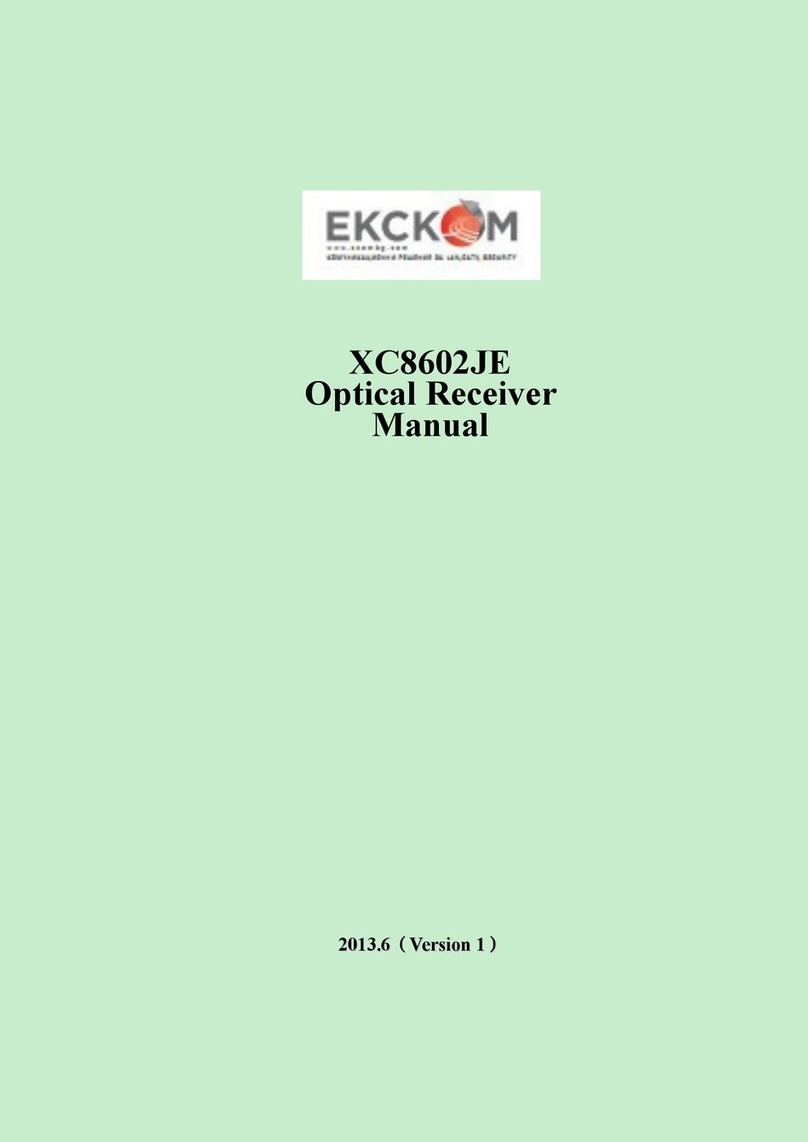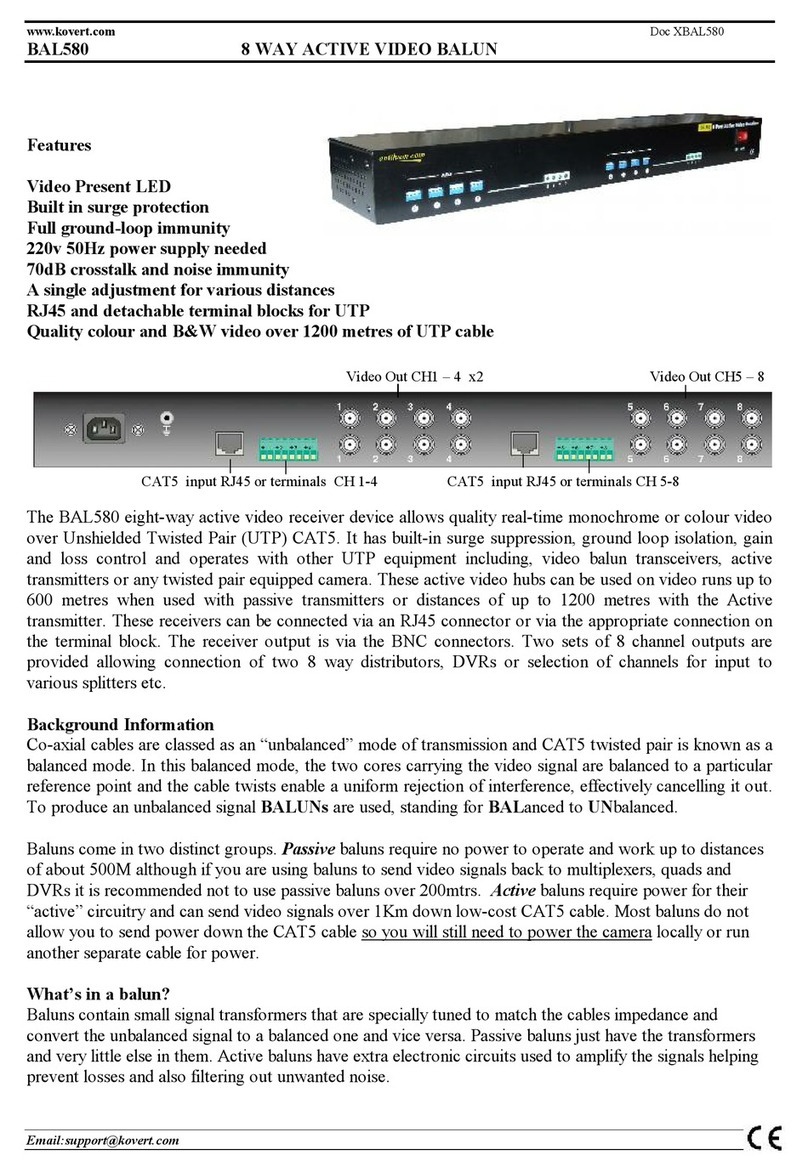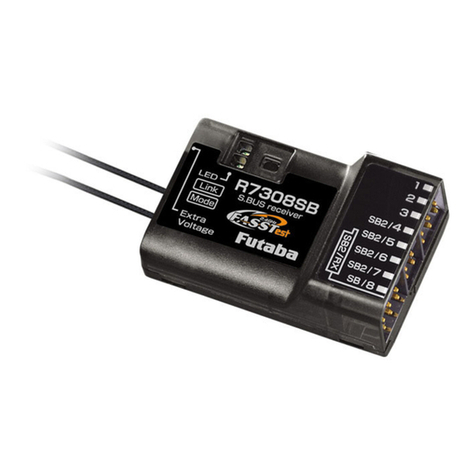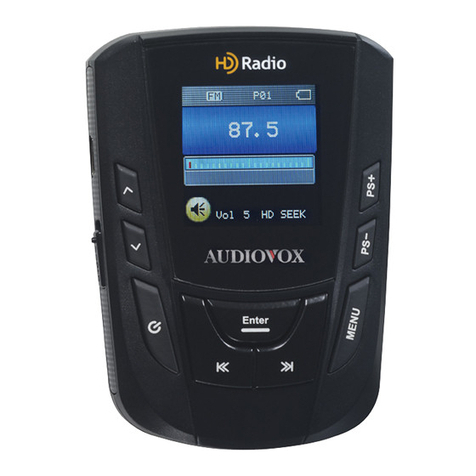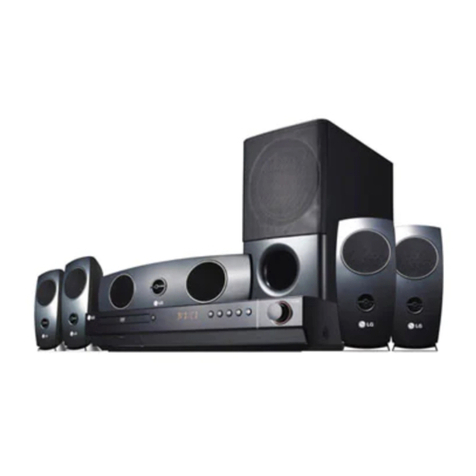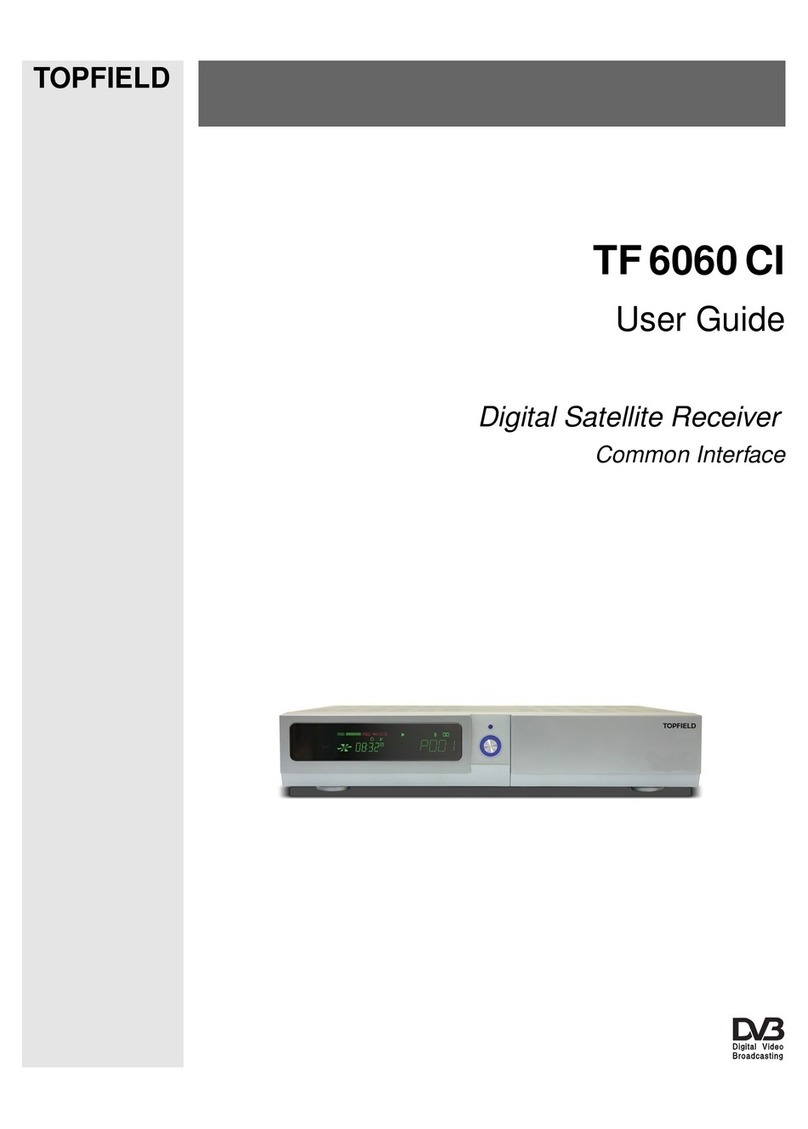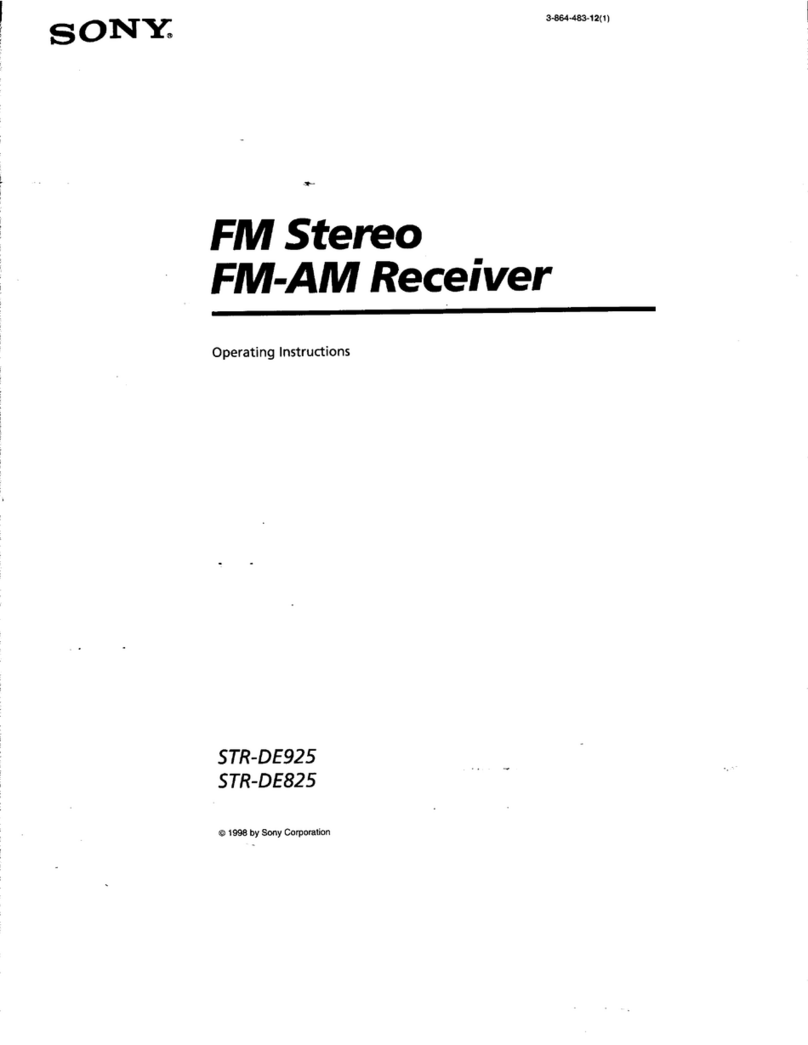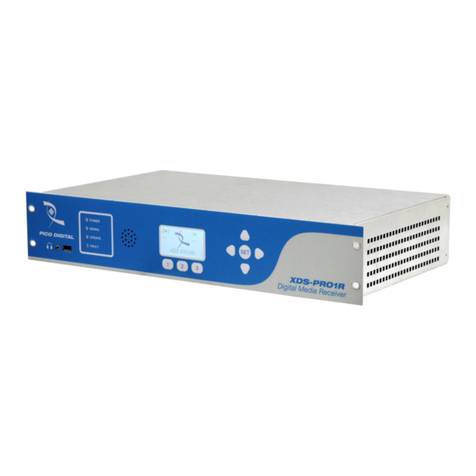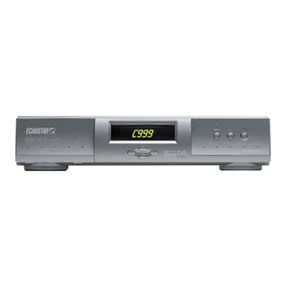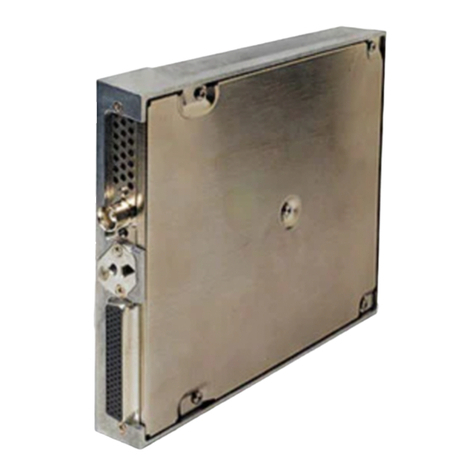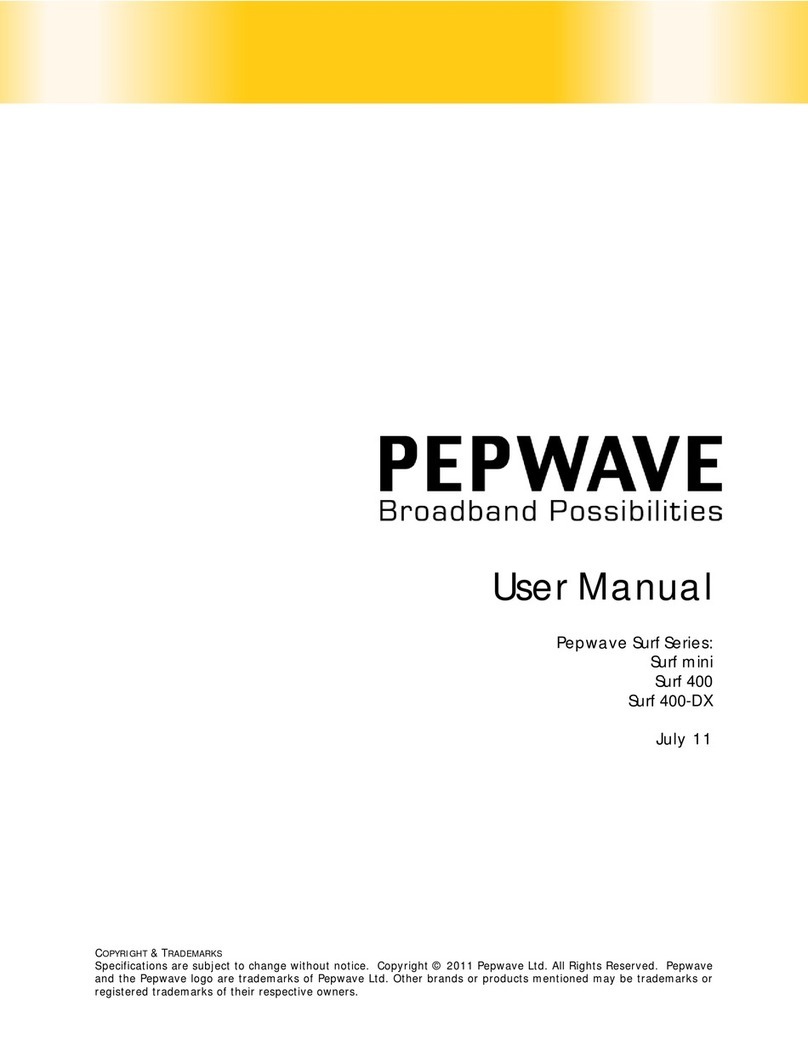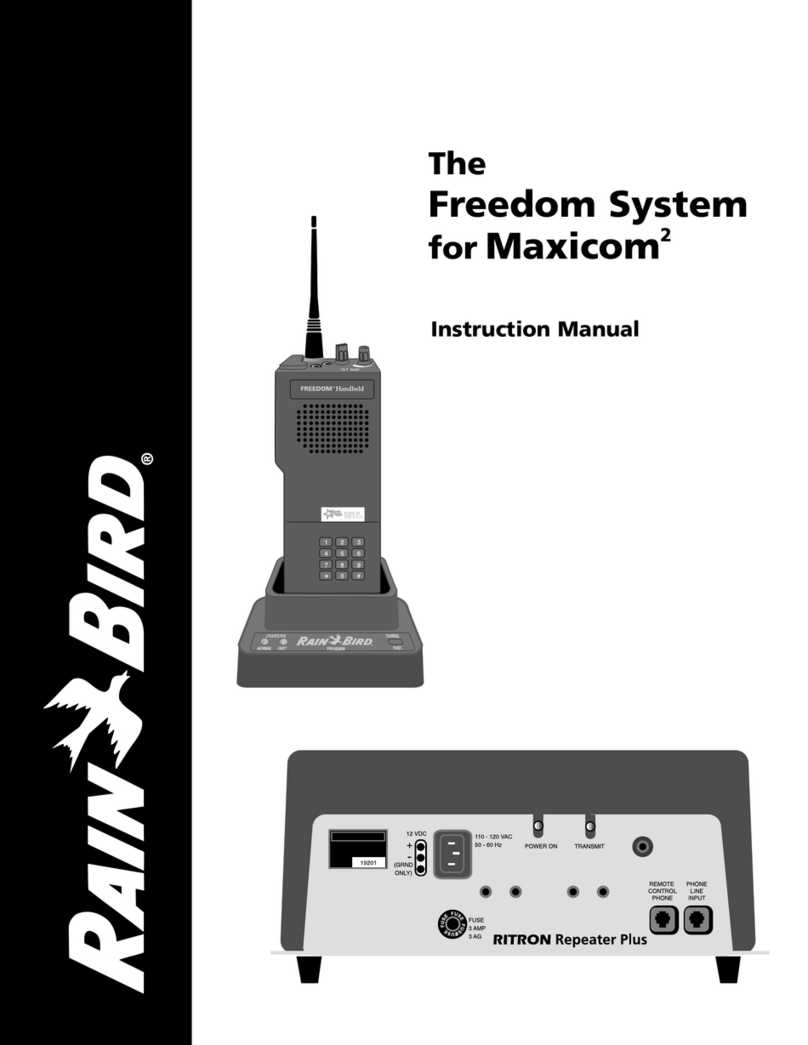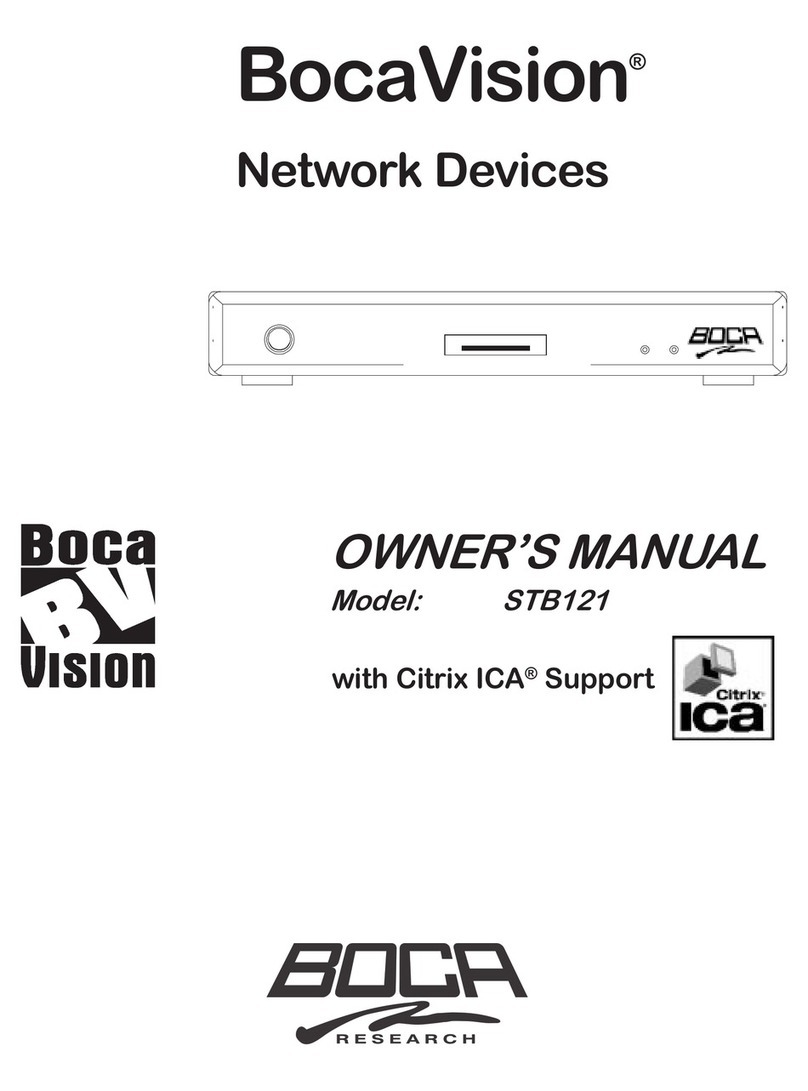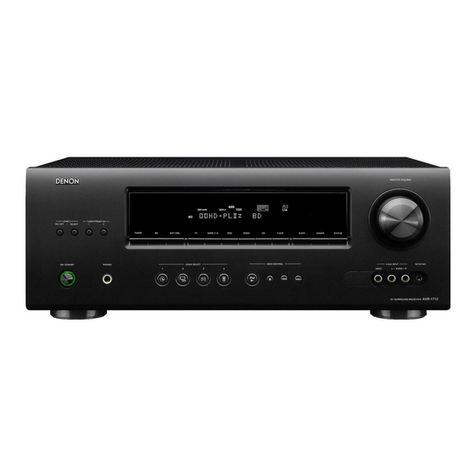Ekckom XC8602ME-B User manual

XC8602ME-B
Optical Receiver Manual
Optical Receiver Specification

-1 -
1. Product Summary
XC8602ME-B outdoor optical receiver is a new 860MHz optical receiver. With wide
receiving optical power range, high output level, low power consumption and compact
structure. It is very easy to install. It is the ideal equipment to build the high-
performance NGB network.
2. Performance Characteristics
■High responsivity PIN photoelectric conversion tube.
■860MHz bandwidth design.
■Optimized circuit design, preceding stage adopts SMT process and post stage adopts
typical module amplifier circuit, make the photoelectronic signal transmission more
smooth.
■Power doubler output, with high gain and low distortion.
■Optical AGC control, when the input optical power range is -7~+2dBm, the output
level, CTB and CSO basically unchanged.
■Can be extended with remote network management, easy to access the network
management system.
■The fiber port and network management port can be selected external (I type) or internal
(II type).
3. Technique Parameter
3.1 Link testing conditions
The technique parameters of this manual according to the measuring method of GY/T
194-2003 <Specifications and methods of measurement on optical node used in CATV
systems>, and tested in the following conditions.
Testing conditions:
Forward path optical receiver part: with 10km standard optical fiber, passive optical
attenuator and standard optical transmitter composed the testing link. Set 59 PAL-D analog
TV channel signal at range of 45/87MHz~550MHz under the specified link loss. Transmit
digital modulated signal at range of 550MHz~862MHz, the digital modulated signal level
(in 8 MHz bandwidth) is 10dB lower than analog signal carrier level. When the input optical
power of optical receiver is -1dBm, the RF output level is 108dBμV, with 8dB output tilt,
measure the C/CTB, C/CSO and C/N.
Note: When the rated output level is the system full configuration and the receiving optical
power is -1dBm, equipment meets the maximum output level of link index. When the system
configuration reduce (that is, actual transmission channels reduce), the output level of
equipment will be increased.
Friendly Notice: Suggest you setting the RF signal to 6~9dB tilt output in the practical
engineering application to improve the nonlinear index (behind the node) of the cable system.

-2 -
3.2 Technique Parameters
Item
Unit
Technique Parameters
Optical Parameters
Receiving Optical Power
dBm
-7 ~ +2
Optical AGC Control Range
dBm
+2 ~ -7
Optical Return Loss
dB
>45
Optical Receiving
Wavelength
nm
1100 ~ 1600
Optical Connector Type
SC/APC or specified by the user
Fiber Type
Single Mode
Link Performance
C/N
dB
≥ 51
EQ 8dB, output level
108dBμV (FZ110)
C/CTB
dB
≥ 65
C/CSO
dB
≥ 60
RF Parameters
Frequency Range
MHz
45 ~862
Flatness in Band
dB
±0.75
Rated Output Level
dBμV
≥ 108
Max Output Level
dBμV
≥ 116 (-7 ~ +2dBm optical power received)
Output Return Loss
dB
≥16
Output Impedance
Ω
75
EQ Range
dB
0~20
ATT Range
dB
0~20
Generic Characteristic
Power Voltage
V
A: AC (150~265)V B: AC (35~90)
V
Operating Temperature
℃
-40~60
Consumption
VA
≤18
Dimension
mm
220 (L) * 205 (W) * 65 (H)
Note: The forward RF parameters are tested under the condition of using NEC module. Use
other module, the parameters will be slightly different.
4. Block Diagram

-3 -
5. Relation Table of Input Optical Power and CNR
6. Structure Description
1. Adjustable ATT knob
2. Adjustable EQ knob
3. Optical receiving port (or external, optional)
4. Working indicator
5. Optical power display tube
6. Power interface
7. Switching power supply
8. Power cord in
9. AC60V power-pass inserter
10. Output -20dB test port
11. Output 1
12. FZ110 or FP204
13. AC60V feed
14. AC60V power-pass inserter
15. Output 2
16. Network management interface
17. Fiber in
18. Network cable in

-4 -
7. NMS setup instructions
If users configured the network management transponder, need to do the following
settings:
Transponder IP setup instruction:
Network management directly modify:
1. Default IP is 192.168.1.168, default gateway is 192.168.1.1, default subnet mask is
255.255.255.0
2. Connect the computer and transponder (can be direct connected), and change the
computer IP to 192.168.1.XXX (XXX is any number from 0 to 255 except 168); start
upper computer network management software, then search the device and log in.
3. Right-click device icon and choose modify the device IP.
4. Enter new IP address, gateway and subnet mask.
5. Click modify, then exit, it is done. There will show new IP address and gateway on
operational logbook.
6. Reboot the transponder, the new IP take effect (Click the reboot button in the network
management software or power on again)

-5 -
8. Common Failure Analysis and Troubleshooting
Failure phenomenon
Failure cause
Solution
After connecting the
network, the image of
the optical contact point
has obvious netlike
curve or large particles
highlights but the image
background is clean.
1. The optical input power of the
optical receiver is too high, make
the output level of the optical
receiver module too high and RF
signal index deteriorate.
2. The RF signal (input the optical
transmitter) index is poor.
1. Check the optical input power and make
appropriate adjustments to make it in the
specified range; or adjust the attenuation of
optical receiver to reduce the output level
and improve index.
2. Check the front end machine room optical
transmitter RF signal index and make
appropriate adjustments.
After connecting the
network, the image of
the optical contact point
has obvious noises.
1. The optical input power of the
optical receiver is not high
enough, results in the decrease of
C/N.
2. The optical fiber connector or
adapter of the optical receiver has
been polluted.
3. The RF input signal level of the
optical transmitter is too low,
make the modulation degree of the
laser is not enough.
4. The C/N index of system link
signal is too low.
1. Check the received optical power of the
optical contact point and make appropriate
adjustments to make it in the specified range.
2. Improve the optical received power of the
optical contact point by cleaning the optical
fiber connector or adapter etc methods.
Specific operation methods see “Clean and
maintenance method of the optical fiber
connector”.
3. Check the RF input signal level of the
optical transmitter and adjust to the required
input range. (When the input channels
number less than 15, should be higher than
the nominal value.)
4. Use a spectrum analyzer to check the
system link C/N and make appropriate
adjustments. Make sure the system link
signal C/N﹥51dB.
After connecting the
network, the images of
several optical contact
points randomly appear
obvious noises or bright
traces.
The optical contact point has open
circuit signal interference or
strong interference signal
intrusion.
1. Check if there is a strong interference
signal source; change the optical contact
point location if possible to avoid the
influence of the strong interference signal
source.
2. Check the cable lines of the optical contact
point, if there is shielding net or situation
that the RF connector shielding effect is not
good.
3. Tightly closed the equipment enclosure to
ensure the shielding effect; if possible add
shielding cover to the optical contact point
and reliable grounding.

-6 -
After connecting the
network, the images of
several optical contact
points appear one or two
horizontal bright traces.
Power supply AC ripple
interference because of the bad
earth of equipment or power
supply.
Check grounding situation of the equipment,
make sure that every equipment in the line
has been reliably grounding and the
grounding resistance must be﹤4Ω.
After connecting the
network, the received
optical power of the
optical contact point is
unstable and changes
continuously. The
output RF signal is also
unstable. But the
detected optical output
power of the optical
transmitter is normal.
The optical fiber connector types
do not match, maybe the APC
type connect to PC type.
The optical fiber connector or
adapter may be polluted seriously
or the adapter has been damaged.
1. Check the type of optical fiber connector
and adopt the APC type optical fiber
connector to ensure the normal transmission
of optical signal.
2. Clean the polluted optical fiber connector
or adapter. Specific operation methods see
“Clean and maintenance method of the
optical fiber connector”.
3. Replace the damaged adapter.
9. Clean and maintenance method of the optical fiber active connector
In many times, we consider the decline of the optical power as the equipment faults, but
actually it may be caused by that the optical fiber connector was polluted by dust or dirt.
Inspect the fiber connector, component, or bulkhead with a fiberscope. If the connector is
dirty, clean it with a cleaning technique following these steps:
1. Carefully pull off the optical fiber active connector from the adapter. The optical fiber
active connector should not aim at the human body or the naked eyes to avoid accidental
injury.
2. Wash carefully with good quality lens wiping paper or medical degrease alcohol cotton.
If use the medical degrease alcohol cotton, still need to wait 1~2 minutes after wash, let
the connector surface dry in the air.
3. The cleaned optical fiber active connector should be connected to optical power meter to
measure output optical power to affirm whether it has been cleaned up.
4. When connect the cleaned optical fiber active connector back to adapter, should notice to
make the force appropriate to avoid the ceramic tube in the adapter crack.
5. If the output optical power is not normal after cleaning, should pull off the adapter and
clean the other connector. If the optical power still low after cleaning, the adapter may be
polluted, clean it. (Note: Be carefully when pull off the adapter to avoid hurting inside
fiber.)
6. Use the dedicated compressed air or degrease alcohol cotton bar to clean the adapter.
When use the compressed air, the muzzle of the compressed air tank should aims at the
ceramic tube of the adapter, clean the ceramic tube with compressed air. When use
degrease alcohol cotton bar, carefully insert the alcohol cotton bar into the ceramic tube
to clean. The insert direction should be consistent, otherwise can not reach ideal cleaning
effect.
Table of contents
Other Ekckom Receiver manuals
